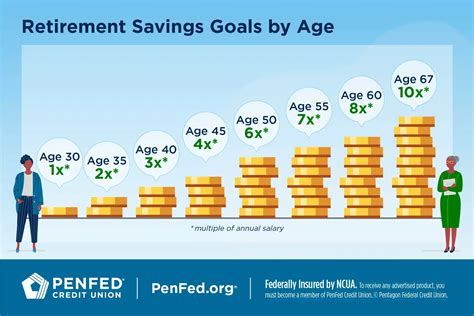
A former firefighter transformed a modest $1,600 investment into a real estate empire of over 30 properties by strategically leveraging government programs, employing creative financing techniques, and focusing on continuous learning.
Mark Smith, who started with a $1,600 tax refund, built his portfolio through a combination of house hacking, BRRRR (Buy, Rehab, Rent, Refinance, Repeat) strategies, and a deep understanding of local markets. Smith, who served as a firefighter, discovered his passion for real estate during his tenure.
Smith’s initial foray into real estate involved house hacking, a strategy where he lived in one unit of a multi-family property while renting out the others to cover his mortgage and expenses. This approach allowed him to build equity quickly and accumulate capital for future investments. He emphasizes the importance of utilizing resources like the Federal Housing Administration (FHA) loans, which require a lower down payment than conventional mortgages.
“The FHA loan was a game-changer for me,” Smith stated. “It allowed me to get into my first property with a minimal down payment, which was critical because I didn’t have a lot of capital to start with.”
Another critical element of Smith’s success is the BRRRR strategy. This involves purchasing distressed properties, renovating them to increase their value, renting them out to generate income, and then refinancing the properties to pull out the initial investment and use it for subsequent purchases. This cycle allows investors to exponentially grow their portfolio without constantly injecting new capital.
“The BRRRR method is all about creating value,” Smith explained. “You’re not just buying a property; you’re improving it, increasing its cash flow, and ultimately creating equity that you can leverage to acquire more properties.”
Smith also highlights the importance of continuous learning and adaptation in the ever-changing real estate market. He regularly attends real estate conferences, reads industry publications, and networks with other investors to stay informed about market trends and best practices.
“The real estate market is constantly evolving, so you have to be willing to learn and adapt,” Smith said. “What worked five years ago might not work today, so it’s essential to stay informed and be willing to try new things.”
Early Life and Career
Before venturing into real estate, Mark Smith dedicated several years to serving as a firefighter. His background instilled in him discipline, resilience, and a strong work ethic – qualities he attributes to his success in the real estate world. He often worked long hours and faced challenging situations, which prepared him for the unpredictable nature of real estate investing.
Smith recalls feeling a sense of financial insecurity despite having a stable job. The desire to create a more secure future for himself and his family led him to explore alternative income streams, and that’s when he discovered his interest in real estate. Initially, he viewed real estate as a side hustle, a way to supplement his income and build long-term wealth.
The Initial Investment and First Property
Smith’s real estate journey began with a modest $1,600 tax refund. Instead of using the money for immediate gratification, he decided to invest it wisely. He spent countless hours researching different investment strategies and analyzing potential properties.
His first investment was a multi-family property that he acquired using an FHA loan. The FHA loan program is designed to help first-time homebuyers and low-to-moderate-income individuals purchase homes by offering lower down payment requirements and more lenient credit score criteria. Smith was able to secure the property with a down payment significantly lower than what would have been required with a conventional mortgage.
“That first property was a huge learning experience for me,” Smith said. “I made a lot of mistakes, but I also learned a lot. It taught me the importance of due diligence, property management, and tenant screening.”
Smith lived in one of the units while renting out the others, a strategy known as house hacking. The rental income covered his mortgage payments, property taxes, and insurance, effectively allowing him to live for free while building equity in the property. This strategy was instrumental in his early success, as it allowed him to accumulate capital and reinvest it into subsequent properties.
The BRRRR Strategy in Detail
The BRRRR (Buy, Rehab, Rent, Refinance, Repeat) strategy has been a cornerstone of Smith’s real estate investment philosophy. It involves a systematic approach to acquiring, improving, and leveraging properties to build a portfolio rapidly.
- Buy: The first step involves identifying and purchasing distressed properties that are undervalued and have the potential for significant improvement. Smith focuses on properties that require renovation or repair, as these tend to be priced lower than move-in-ready homes.
- Rehab: Once a property is acquired, Smith undertakes renovations to increase its value and attractiveness to potential tenants. This may involve cosmetic upgrades, such as painting and flooring, as well as more extensive repairs, such as replacing roofs or updating electrical systems. Smith emphasizes the importance of budgeting carefully and managing the renovation process efficiently to avoid cost overruns and delays.
- Rent: After the renovations are complete, the property is rented out to tenants. Smith focuses on attracting high-quality tenants who are responsible and pay their rent on time. He conducts thorough tenant screening, including background checks and credit checks, to minimize the risk of renting to problematic individuals.
- Refinance: Once the property is rented and generating income, Smith refinances the mortgage to take advantage of the increased value created by the renovations. The new loan is based on the property’s after-repair value (ARV), which is typically higher than the original purchase price. This allows Smith to pull out a significant portion of his initial investment, which he can then use to acquire additional properties.
- Repeat: The final step involves repeating the process with another distressed property. By continuously buying, rehabbing, renting, and refinancing properties, Smith has been able to exponentially grow his real estate portfolio without constantly injecting new capital.
Leveraging Government Programs
In addition to FHA loans, Smith has utilized other government programs to facilitate his real estate investments. He advises aspiring investors to research and take advantage of programs offered by the Department of Housing and Urban Development (HUD) and other government agencies. These programs may include grants, tax credits, and loan guarantees that can significantly reduce the cost of acquiring and renovating properties.
Smith highlights the importance of understanding the eligibility requirements and application processes for these programs. He also advises investors to seek guidance from real estate professionals who are familiar with government programs and can help them navigate the application process.
Creative Financing Techniques
Smith has also employed creative financing techniques to overcome challenges in securing traditional financing. These techniques include:
- Seller Financing: This involves negotiating with the seller to finance the purchase of the property. The seller acts as the lender, providing a mortgage to the buyer. Seller financing can be an attractive option for buyers who have difficulty qualifying for traditional financing or who want to avoid the costs and hassles of dealing with a bank.
- Private Money Lenders: These are individuals or companies that lend money to real estate investors. Private money lenders typically charge higher interest rates and fees than traditional lenders, but they may be more willing to lend to investors who are purchasing distressed properties or who have a short track record.
- Hard Money Loans: These are short-term loans that are secured by real estate. Hard money loans are typically used to finance the purchase and renovation of distressed properties. They are characterized by high interest rates and fees, but they can be a valuable tool for investors who need to move quickly and do not have access to traditional financing.
- Partnerships: Partnering with other investors can provide access to capital and expertise that would otherwise be unavailable. Smith has formed partnerships with other investors to acquire larger or more complex properties.
Importance of Due Diligence
Smith emphasizes the importance of conducting thorough due diligence before investing in any property. Due diligence involves investigating all aspects of the property, including its physical condition, legal status, financial history, and market value.
Smith advises investors to:
- Conduct a thorough inspection of the property: This includes hiring a qualified home inspector to identify any potential problems with the property, such as structural issues, water damage, or pest infestations.
- Review the property’s title history: This involves examining the records to ensure that the seller has clear title to the property and that there are no outstanding liens or encumbrances.
- Analyze the property’s financial history: This includes reviewing the property’s income and expenses to determine its profitability.
- Research the local market: This involves analyzing the supply and demand for rental properties in the area, as well as the average rental rates and vacancy rates.
Property Management Strategies
Effective property management is crucial for maximizing the profitability of rental properties. Smith employs a variety of strategies to ensure that his properties are well-maintained and that his tenants are satisfied.
These strategies include:
- Thorough tenant screening: This involves conducting background checks, credit checks, and reference checks to ensure that prospective tenants are responsible and reliable.
- Clear and comprehensive lease agreements: This helps to avoid misunderstandings and disputes between landlords and tenants.
- Regular property inspections: This helps to identify and address any maintenance issues before they become major problems.
- Prompt and professional response to tenant requests: This helps to build positive relationships with tenants and reduce tenant turnover.
- Outsourcing property management: Smith has found it beneficial to outsource the day-to-day management of some of his properties to professional property management companies. This allows him to focus on acquiring new properties and managing his overall portfolio.
Continuous Learning and Adaptation
Smith attributes much of his success to his commitment to continuous learning and adaptation. The real estate market is constantly evolving, and investors must stay informed about market trends, new regulations, and innovative strategies.
Smith regularly attends real estate conferences, reads industry publications, and networks with other investors to stay up-to-date on the latest developments in the field. He also emphasizes the importance of being willing to experiment with new strategies and adapt to changing market conditions.
Building a Team
Smith stresses the importance of building a strong team of professionals to support his real estate ventures. This team includes:
- Real estate agents: Experienced agents can help investors find and evaluate potential properties.
- Lenders: Reliable lenders can provide financing for property acquisitions and renovations.
- Contractors: Skilled contractors can perform renovations and repairs efficiently and effectively.
- Property managers: Professional property managers can handle the day-to-day management of rental properties.
- Attorneys: Real estate attorneys can provide legal advice and assistance with contracts and transactions.
- Accountants: Accountants can help investors manage their finances and comply with tax regulations.
Overcoming Challenges and Setbacks
Smith acknowledges that his real estate journey has not been without its challenges and setbacks. He has faced unexpected repairs, difficult tenants, and market downturns. However, he has learned from his mistakes and has developed strategies for overcoming these challenges.
Smith emphasizes the importance of:
- Maintaining a positive attitude: A positive attitude can help investors stay motivated and resilient in the face of adversity.
- Learning from mistakes: Mistakes are inevitable in real estate investing. The key is to learn from them and avoid repeating them in the future.
- Seeking advice from experienced investors: Experienced investors can provide valuable guidance and support.
- Staying focused on long-term goals: Real estate investing is a long-term game. It is important to stay focused on long-term goals and avoid getting discouraged by short-term setbacks.
Future Goals
Smith plans to continue expanding his real estate portfolio and helping others achieve financial freedom through real estate investing. He offers mentorship programs and workshops to share his knowledge and experience with aspiring investors.
He aims to create a legacy of financial independence for his family and to inspire others to pursue their dreams through real estate.
Advice for Aspiring Real Estate Investors
Smith offers the following advice for aspiring real estate investors:
- Start small: Don’t try to do too much too soon. Start with a small investment and gradually increase your portfolio as you gain experience.
- Educate yourself: Learn as much as you can about real estate investing before you start.
- Find a mentor: Seek guidance from an experienced investor who can provide advice and support.
- Be patient: Real estate investing is a long-term game. It takes time to build a successful portfolio.
- Be persistent: Don’t give up when you face challenges. Stay focused on your goals and keep moving forward.
- Take action: The most important thing is to take action. Don’t just sit on the sidelines and dream about investing in real estate. Get out there and start doing it.
By following these principles, aspiring real estate investors can increase their chances of success and achieve financial freedom. Mark Smith’s story serves as an inspiration, proving that with dedication, strategic planning, and a willingness to learn, anyone can build a successful real estate empire, regardless of their initial financial situation. His journey exemplifies the power of leveraging opportunities, continuous self-improvement, and a determined mindset in achieving long-term financial goals.
Frequently Asked Questions (FAQ)
1. How did Mark Smith initially finance his first real estate investment with only $1,600?
Mark Smith used his $1,600 tax refund as a down payment for a multi-family property through an FHA (Federal Housing Administration) loan. FHA loans require a significantly lower down payment than conventional mortgages, making it accessible for first-time homebuyers and those with limited capital. He then employed house hacking, living in one unit while renting out the others to cover his mortgage and expenses.
2. What is the BRRRR strategy, and how did it contribute to Mark Smith’s real estate success?
BRRRR stands for Buy, Rehab, Rent, Refinance, Repeat. It’s a strategy where you buy a distressed property, renovate it, rent it out, refinance it based on the improved value, and then use the cash-out refinance to repeat the process with another property. Smith used this strategy to create value, increase cash flow, and leverage equity, allowing him to acquire more properties without constantly injecting new capital.
3. Besides FHA loans, what other government programs did Mark Smith utilize in his real estate investments?
While the article specifically mentions the FHA loan, it also alludes to Smith advising others to research and take advantage of programs offered by the Department of Housing and Urban Development (HUD) and other government agencies. These programs may include grants, tax credits, and loan guarantees that can significantly reduce the cost of acquiring and renovating properties. He stresses understanding eligibility requirements and application processes.
4. What are some creative financing techniques Mark Smith employed to acquire properties?
Smith utilized several creative financing techniques, including:
- Seller Financing: Negotiating with the seller to finance the purchase.
- Private Money Lenders: Borrowing from individuals or companies, often at higher interest rates.
- Hard Money Loans: Short-term loans secured by real estate, typically used for distressed properties.
- Partnerships: Collaborating with other investors to pool capital and expertise.
5. What key advice does Mark Smith offer to aspiring real estate investors who are just starting?
Smith advises aspiring real estate investors to:
- Start Small: Begin with a manageable investment and gradually increase their portfolio.
- Educate Themselves: Learn extensively about real estate investing before starting.
- Find a Mentor: Seek guidance from an experienced investor.
- Be Patient: Understand that real estate investing is a long-term endeavor.
- Be Persistent: Stay focused and overcome challenges.
- Take Action: Don’t just dream; start investing.









